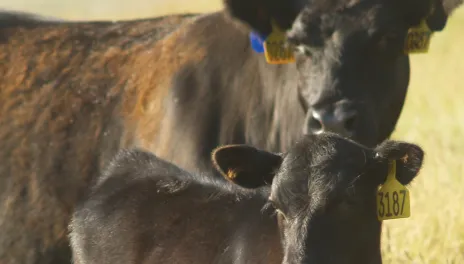NDSU Livestock Microbiome Research Poised to Address Challenges Facing Ranchers
Ranchers in North Dakota and across the U.S. are gearing up to face unprecedented challenges in the coming years, including resistance to antibiotics, growing interest in the environmental footprint of beef production and increased demand for beef to feed a growing global population.
Samat Amat, assistant professor in the Department of Microbiological Sciences, and his research team are working to address these challenges through research on the livestock microbiome.
The communities of bacteria living within the respiratory, gastrointestinal and reproductive tracts of livestock are vital to animal health and reproduction. Changes to an animal’s microbiome can improve efficiency of feed utilization, promote resilience against infectious diseases, and mitigate methane emissions.
“I believe that the maternal gut and reproductive microbiome, and the communication between the microbes in the mother’s body and those in offspring hold a treasure trove for improved calf health and feed efficiency,” Amat says. “My research program aims to unlock this treasure trove.”
In collaboration with faculty members from the Department of Animal Sciences, Amat and his team are investigating how changes to the microbiome of the pregnant cow affect the calf’s developmental programming. These changes can impact the calf’s microbiome development, energy balance, methane emissions and feedlot performance.
Amat’s lab also is working on a microbiota-based approach to mitigating pinkeye in cattle. Pinkeye is a major concern for ranchers due to antimicrobial resistance.
In partnership with Extension veterinarian Dr. Gerald Stokka and the NDSU Veterinary Diagnostic Laboratory, Amat and his team collected samples from veterinary clinics across the state to identify bacterial communities in healthy eyes. They have made significant progress toward developing a synthetic bacterial community that can control pinkeye without reliance on antibiotics.
Through these and other research projects, Amat and his team are leveraging the livestock microbiome to contribute important solutions for the future of ranching and beef production in North Dakota and beyond.
